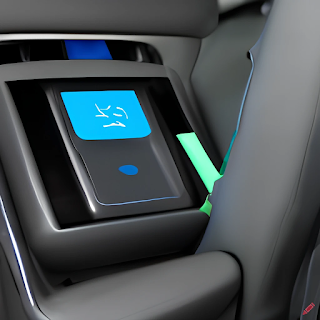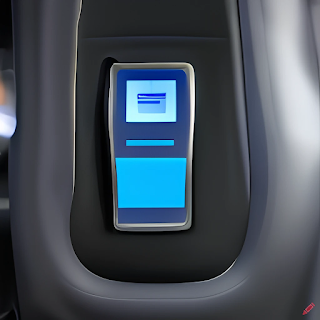Biometric Seats
The Future of Automotive Safety: Biometric Seats
As automotive technology continues to evolve, safety is becoming a top priority. One of the most innovative and promising advancements in automotive safety is the biometric seat. By taking information from the face and palms of the driver, this seat can measure anxiety levels and advise when it's time for a break. This revolutionary technology can detect fatigue levels and distinguish between alertness and fatigue, allowing for the ultimate in automotive safety. This blog post will explore the biometric seat in depth and discuss its potential for the future of automotive safety.
 |
Biometric Seats |
 |
Biometric Seats |
How it works.
Biometric seat technology in cars is an innovative way to help ensure driver safety. The biometric seat, also known as a "smart seat," utilizes facial and palm recognition to determine driver alertness and fatigue levels. By using sensors, a camera, and a display, the biometric seat can quickly and accurately measure factors like heart rate and eye movements.
When the biometric seat recognizes signs of fatigue or other distress, it will alert the driver to take a break or pull over. It can even recommend the best places to stop for rest or refueling. This technology is still in its early stages, but promises great potential for improving automotive safety.
The biometric seat is capable of collecting a wide range of data points from the driver's face and palms. By analyzing this data, it can accurately infer anxiety levels and alert the driver when it's time for a break. The biometric seat also uses advanced algorithms to constantly monitor the driver’s condition and alert them if any changes occur. This can provide a significant boost in driver safety and comfort.
Benefits.
Biometric seat technology in cars offers a wide range of benefits. Automotive safety can be significantly improved thanks to biometric seats, as they can measure driver alertness and fatigue levels. The technology uses facial and palm recognition to accurately measure anxiety levels, and can alert drivers when they should take a break or switch to a different task. This has the potential to drastically reduce incidents caused by drowsy or distracted driving.
 |
| Biometric seats monitor the driver's heart rate and body temperature with the help of sensors |
In addition to improving safety, biometric seat technology in cars can also provide more personalized comfort for the driver. The technology can tailor seat adjustments according to individual preferences, offering an enhanced level of comfort for the driver. With this technology, drivers no longer need to manually adjust their seating position every time they get in the car.
Overall, biometric seat technology in cars provides numerous benefits that can improve automotive safety, comfort, and convenience. It is an exciting innovation that has the potential to revolutionize the way we drive.
Drawbacks.
Despite the obvious benefits that the Biometric Seat brings to automotive safety, there are a few drawbacks associated with it. First, the cost of implementing biometric seat technology in cars can be quite high. Installing the necessary hardware and software to accurately measure driver fatigue levels can be a pricey endeavor. Furthermore, it may not be feasible for every driver to install such a system due to financial constraints.
Additionally, there is some concern about the privacy implications associated with the Biometric Seat's capabilities. The cameras and sensors embedded in the seat can collect data from the driver, which can then be used by other entities without their consent. This could lead to potential issues of data misuse, which would further contribute to the privacy concerns surrounding this technology. As such, it is important that measures are taken to ensure that data collected by the biometric seat is secure and used responsibly.
Sensor, Display or Camera.
When it comes to the biometric seat technology in cars, a variety of sensors, displays, and cameras are used. The sensors measure various aspects of a driver's physiological state, such as heart rate, respiration rate, body temperature, and more. This data is then relayed to the display, which provides feedback on the driver's current anxiety levels and when they should take a break. Additionally, the display can show a variety of other metrics such as driving speed, route navigation, and warning messages. Finally, the camera is used to detect the driver's face and palms. This helps to identify the driver and also assess their level of alertness. All of this information is processed and analyzed to provide a comprehensive overview of the driver’s state so that the Automotive can make decisions about how best to improve safety for its passengers.
Advises the driver when to take a break.
The innovative biometric seat technology in cars is designed to monitor drivers’ alertness and fatigue. It collects information from the face, palms, and other sources to measure stress levels, taking into consideration things like the length of the drive, time spent on the road, and any erratic behavior detected.
When the biometric seat detects that a driver is getting tired or stressed, it sends out an alert advising them to take a break. The technology can be used in both commercial and passenger vehicles, providing a much-needed safety net for drivers who may have been pushing themselves too hard.
This technology has the potential to greatly reduce the number of auto accidents caused by fatigue. By providing warnings when a driver should take a break, the biometric seat ensures that drivers are well rested before getting back on the road. This not only improves safety, but also reduces liability for car companies, allowing them to protect their customers from potential harm.
The biometric seat is just one example of how automotive technology is helping to enhance safety on our roads. By investing in advanced biometric seat capabilities, car companies are taking the initiative to keep their drivers safe and secure.



.jpeg)
